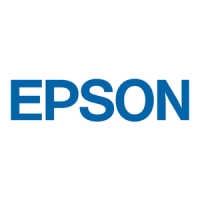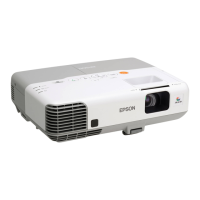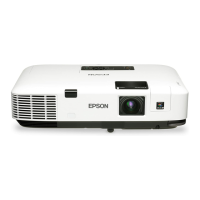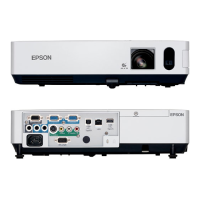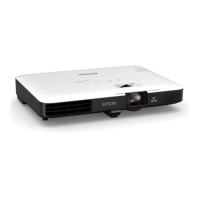Do you have a question about the Epson PowerLite 1880 and is the answer not in the manual?
Lists the minimum system requirements for running EasyMP Network Projection on Windows and Mac OS.
Provides step-by-step instructions for installing EasyMP Network Projection on both Windows and Mac OS.
An infrastructure connection mode that connects to an existing network system via a LAN cable.
Steps to connect a computer and projector via network using EasyMP Network Projection, including network settings.
Guide on starting EasyMP Network Projection, selecting connection mode, and connecting to a projector.
Details the elements and functions of the EasyMP Network Projection projector selection screen.
Explains the EasyMP Network Projection toolbar functions for operating and setting the projector.
How to manually search for projectors by IP address or name on different subnets.
How to arrange virtual display allocation for projecting specific images or different images from left to right.
Steps to set up virtual display, allocate images, and project them for multi-screen display.
Explains the virtual display setup for arrangement example 1, including enabling drivers.
Procedure for setting up virtual displays in Windows and Mac OS after starting EasyMP Network Projection.
How to open files and move screens to the virtual display for projection.
Lists the minimum system requirements for running EasyMP Network Projection on Windows and Mac OS.
Provides step-by-step instructions for installing EasyMP Network Projection on both Windows and Mac OS.
An infrastructure connection mode that connects to an existing network system via a LAN cable.
Steps to connect a computer and projector via network using EasyMP Network Projection, including network settings.
Guide on starting EasyMP Network Projection, selecting connection mode, and connecting to a projector.
Details the elements and functions of the EasyMP Network Projection projector selection screen.
Explains the EasyMP Network Projection toolbar functions for operating and setting the projector.
How to manually search for projectors by IP address or name on different subnets.
How to arrange virtual display allocation for projecting specific images or different images from left to right.
Steps to set up virtual display, allocate images, and project them for multi-screen display.
Explains the virtual display setup for arrangement example 1, including enabling drivers.
Procedure for setting up virtual displays in Windows and Mac OS after starting EasyMP Network Projection.
How to open files and move screens to the virtual display for projection.
| projection system | Epson 3LCD, 3-chip technology |
|---|---|
| native resolution | 1024 x 768 (XGA) |
| color light output | 4000 lumens |
| power supply voltage | 100 – 240 V ± 10%, 50/60 Hz AC |
|---|---|
| power consumption (normal mode) | 381 W |
| power consumption (eco mode) | 309 W |
| lamp type | 275 W UHE E-TORL |
|---|---|
| lamp life (normal mode) | 3000 hours |
| lamp life (eco mode) | 4000 hours |
| operating temperature | 41 ˚ to 95 ˚F (5 ˚ to 35 ˚C) |
|---|---|
| fan noise (normal mode) | 39 dB |
| fan noise (eco mode) | 35 dB |
| f-number | 1.51 – 1.99 |
|---|---|
| focal length | 18.2mm – 29.2mm |
| zoom ratio | optical zoom 1.0 – 1.6 |
| dimensions including feet | 13.5" x 10.3" x 4.2" |
|---|---|
| dimensions excluding feet | 13.5" x 10.3" x 3.6" |
| weight | 7.4 lb |
